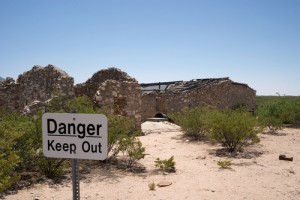By: Marco Roca
With skyrocketing national debt, a seemingly dystopian economy, and soaring international political unrest, the global landscape is becoming increasingly tumultuous for Americans. Regrettably, this reality already exists without even considering escalating nuclear threats. A decreasing control over nuclear materials, rising proliferation of nuclear armaments, dicier terrorist threats, and more rogue anti-U.S. states all make today look more like a day in the Cold War. The potentially farfetched, doomsday image this scenario depicts makes it easy to discount, but our nation’s government and highest-ranking leaders find it unsettlingly realistic. For that very reason, the Los Alamos National Laboratory received over $2.2 billion from the federal government in the 2012 fiscal year.
Los Alamos National Laboratory (LANL), the mastermind behind the famous Manhattan Project, is our nation’s leader in addressing the threats posed by nuclear proliferation. The scale of proliferation can be as large as a nation-state or as comparatively tiny as the radioactive resources needed to construct and detonate a dirty bomb in the United States. LANL’s efforts also go towards supporting nuclear deterrence and fostering energy security. For example, one threat most people do not immediately consider is the danger posed by terrorists blowing up a nuclear power plant within our borders. LANL seeks to explore dangerous possibilities such as this and many other non-apparent perils. Consequently, LANL recruits only the best and brightest scientific minds in the U.S. When LANL makes a breakthrough in its research, it often shares its results with the broader nuclear nonproliferation community.
Since Los Alamos National Laboratory has such lofty goals, it is broken down into several groups for maximum synergy and efficiency. As national security is this article’s main concern, it will focus on the Nuclear Nonproliferation Division. Within the Nuclear Nonproliferation Division exists the group known as “N-3”, or The International Threat Reduction Group. N-3’s key mission is to “identify, control, recover, and return radioactive sources… thereby removing domestic and international threat risks.” N-3 is of particular importance in carrying out the needs of the National Nuclear Security Administration. In N-3 more than in any other group within its Division of Nuclear Nonproliferation, nuclear detection technologies are essential. Technological prowess in N-3 helps serve as a safeguard in nuclear processing, assists in arms control, aids in implementing space systems for research and treaty monitoring, and supports the efforts to detect nuclear materials in transit.
Despite Los Alamos’ well-deserved position of national prominence, its future looks less than stellar. Since about 79 percent of LANL’s funding comes from the Department of Energy, and almost all of the other 21 percent comes from other federal sources such as the Department of Defense and NASA, future budget cuts are of grave concern. The imminent Fiscal Cliff, the massive budget cuts to be implemented on midnight December 31, 2012 as part of the Budget Control Act of 2011, especially threatens LANL’s well-being. On February 21 of this year, LANL declared that it would have to lay off 11 percent of its 7,600 employees. This travesty is mostly due to LANL’s budget decreasing $300 million in 2012 alone. If these are the budget cuts carried out when we are still deficit spending over $1.3 trillion annually, then what impact will budget cuts under the Fiscal Cliff, aimed at eliminating all deficit spending, bring to LANL?
Perhaps funding organizations like LANL really is not as important as funding entitlement programs such as Medicare, Medicaid, or Social Security. However, consider the following nightmarish situation before jumping to conclusions: LANL and other nonproliferation programs are eliminated drastically or even completely. Far more expensive entitlement programs arise comparatively unscathed, and politicians get to keep their grasps on their precious political capital. All goes well for about a year, and then on New Year’s Eve the unthinkable happens. Terrorists attack New York once again. Only this time, instead of two buildings, a dirty bomb levels Times Square. With less money flowing towards nonproliferation programs and border security measures, this horror could be quickly realized.
Thus it is crucial that all Americans understand the vital role that our laboratories and scientists play in national security. Furthermore, we must begin to take more responsibility and make the harder choices. Can we really not allocate $2-3 billion out of the $1.56 trillion we spend on entitlements or the $646 billion we use for discretionary spending to dedicate towards LANL? Why don’t we earmark a fraction of the $700 billion that we spend on defense towards ensuring the vitality of LANL and programs like it? The answer is of course it’s possible, but first we must disseminate awareness about the issue and hope that it gains enough of a following for politicians to care. The potential danger far outweighs any social program the Obama administration would want to implement, or any budget cuts that the Romney administration may try to execute.

